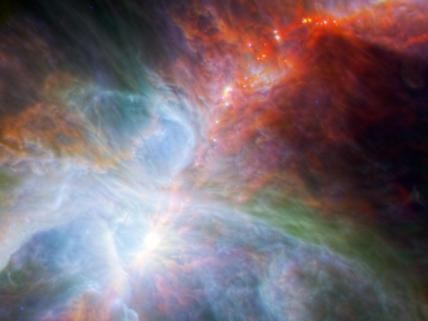NASA Releases New Atlas Of Entire Infrared Sky

NASA has unveiled a new atlas and catalogue of the entire infrared sky, according to a new report.
The atlas contains information about more than half a billion stars, galaxies and other objects. The images and information were captured by the Wide-field Infrared Survey Explorer (WISE) mission launched on 14 Dec, 2009.
WISE has mapped the entire sky in 2010 with vastly better sensitivity than its predecessors. It collected more than 2.7 million images taken at four infrared wavelengths of light, capturing everything from nearby asteroids to distant galaxies.
WISE has not only mapped the entire infrared sky but it has also led to numerous discoveries, including the elusive, coolest class of stars. Astronomers hunted for these failed stars, called "Y-dwarfs," for more than a decade. Because they have been cooling since their formation, they do not shine in visible light and could not be spotted until Wise mapped the sky with its infrared vision.
WISE has also found the first known "Trojan" asteroid to share the same orbital path around the sun as earth.
"Today, WISE delivers the fruit of 14 years of effort to the astronomical community," said Edward Wright, WISE principal investigator at University of California, Los Angeles.
Roc Cutri from the California Institute of Technology in Pasadena, said with the release of the all-sky catalogue and atlas, WISE joins the pantheon of great sky surveys that have led to many remarkable discoveries about the universe.
"It will be exciting and rewarding to see the innovative ways the science and educational communities will use WISE in their studies now that they have the data at their fingertips," he added
© Copyright IBTimes 2025. All rights reserved.





















